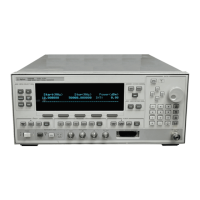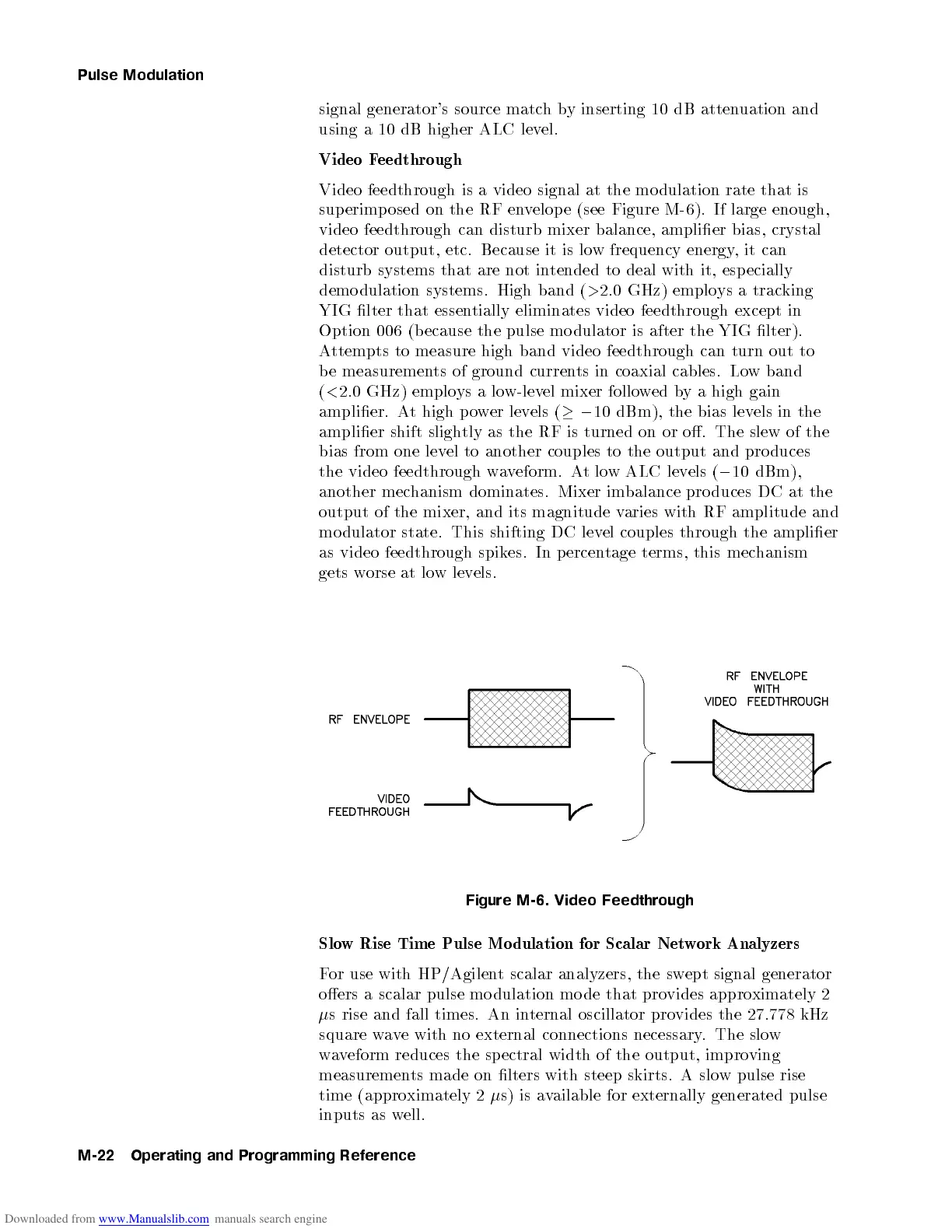Pulse Modulation
signal generator's source matchby inserting 10 dB attenuation and
using a 10 dB higher ALC level.
Video Feedthrough
Video feedthrough is a video signal at the mo dulation rate that is
superimp osed on the RF envelop e (see Figure M-6 ). If large enough,
video feedthrough can disturb mixer balance, amplier bias, crystal
detector output, etc. Because it is low frequency energy, it can
disturb systems that are not intended to deal with it, especially
demodulation systems. High band (
>
2.0 GHz) employs a tracking
YIG lter that essentially eliminates video feedthrough except in
Option 006 (b ecause the pulse mo dulator is after the YIG lter).
Attempts to measure high band video feedthrough can turn out to
be measurements of ground currents in coaxial cables. Low band
(
<
2.0 GHz) employs a low-level mixer followed by a high gain
amplier. At high p ower levels (
0
10 dBm), the bias levels in the
amplier shift slightly as the RF is turned on or o. The slew of the
bias from one level to another couples to the output and pro duces
the video feedthrough waveform. Atlow ALC levels (
0
10 dBm),
another mechanism dominates. Mixer imbalance produces DC at the
output of the mixer, and its magnitude varies with RF amplitude and
mo dulator state. This shifting DC level couples through the amplier
as video feedthrough spikes. In percentage terms, this mechanism
gets worse at low levels.
Figure M-6. Video Feedthrough
Slow Rise Time Pulse Mo dulation for Scalar Network Analyzers
For use with HP/Agilent scalar analyzers, the swept signal generator
oers a scalar pulse mo dulation mo de that provides approximately 2
s rise and fall times. An internal oscillator provides the 27.778 kHz
square wave with no external connections necessary. The slow
waveform reduces the sp ectral width of the output, impro
ving
measurements made on lters with steep skirts. A slo
w pulse rise
time (approximately 2
s) is available for externally generated pulse
inputs as well.
M-22 Operating and Programming Reference

